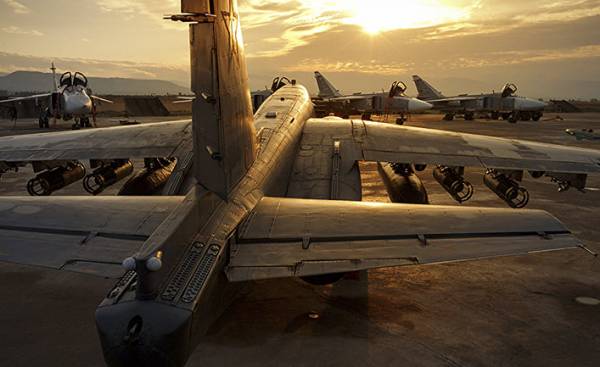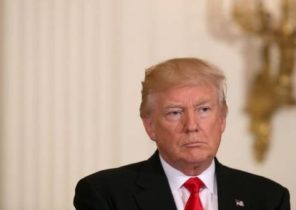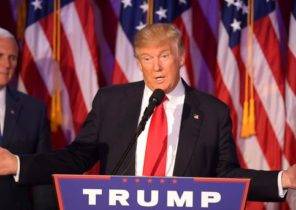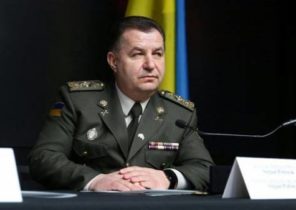
Last month, for the first time since the Syrian civil war in 2011, the United States directly attacked the forces of the Syrian government and its allies — not once but at least four times. Now the main question is not about Syria, and Russia threatened to shoot down aircraft of the US-led coalition in the skies over Syria in response to the last of these incidents in which U.S. fighter jet shot down a Syrian bomber.
Are the US and Russia on the brink of war in the middle East, and if so, how can it be avoided?
The political situation in the middle East is fluid and disordered. However, for the sake of simplicity, before we discuss the role of USA and Russia, we leave aside the small parties to the conflict and divide the rest into five approximate categories formed in this region since the beginning of the Arab Spring in 2011.
The first are the Sunni monarchies (Saudi Arabia, Obyedinennye Arab Emirates and Bahrain); secular Arab nationalists (Egypt since the arrival of President Abdul-Fattah Al-Sisi to power in 2013, Algeria, Morocco and Tunisia); and the forces of General Khalifa the Haftarot in Eastern Libya.
In the second category consist of Turkey; Qatar; supporters of the Muslim brotherhood, including Hamas in Palestine; Egypt during the reign of President Morsi until 2013 and internationally recognized government of Libya, located in the Western part of the country.
The third category consists of Iran and its Shiite allies, including Iraq (in any case, some of the major factions in the Baghdad government), the Assad regime in Syria and Hezbollah in Lebanon.
The fourth structure includes assorted jihadists-Sunnis, including the Islamic State (banned in Russia as a terrorist organization — approx. ed.), the various allies of al-Qaeda (banned in Russia, ed.), and small groups.
Fifth is Israel not included in any of the categories above, however, the closest standing to members first.
Three key motif from the beginning of the Arab Spring in 2011, give a General explanation of the role of the United States and Russia to what is happening and the reasons why the two superpowers moving towards confrontation in the middle East.
The first is the contradiction between stability and human rights. The United States and its Western allies, initially inspired by philanthropy, has achieved regime change in Libya and tried to implement it in Syria, supporting the rebels in both cases. These uprisings became infected with radical Islam, giving Russia the opportunity it is reasonable to assert the need to support authoritarian leaders from opposite sides of the conflict (the Haftarot in Libya and Assad in Syria) to prevent Islamist chaos.
A similar case is Egypt. Russia took advantage of the hostility of the Obama administration to the regime of Sisi for violations of human rights that followed the overthrow of the government of the Muslim brotherhood, to increase Russian influence in Cairo — the success of these actions is reflected in the ongoing support of Egypt, the Russian intervention in Syria.
The second motive — a nuclear agreement with Iran, concluded in 2015 by the Obama administration and continued by the administration of the trump, despite the hostility of the latter; according to its advocates, this agreement was the best way to prevent Iran’s acquisition of nuclear weapons without a Declaration of war. Russia has joined sanctions against Iran, but when they were removed, Moscow entered into warmer relations with Tehran — this was evidenced by its important role in the conclusion of the contract of OPEC between Saudi Arabia and Iran in November 2016.
Unlike Moscow, the administration trump took against Tehran’s tough stance. For such a change of views she had several reasons: the Iranian missile tests conducted after the conclusion of the Treaty; Iran’s support for Shiite militants in Iraq, Syria, Yemen and Lebanon; and the belief that such longtime U.S. allies as Saudi Arabia, United Arab Emirates and Israel need more support (although many Israelis supported the agreement with Iran).
The third motif — a role that gained in the region of the radical group of Sunni Islamists who have adopted social networking and other tools that facilitate collaboration over the Internet. Without this it is impossible to explain the speed with which ISIS was formed. Mobile network of jihadists skillfully took advantage of the vulnerabilities of fragile States, and then seized power in the areas with a Sunni majority, especially in Western Iraq, Northern Syria and South Yemen.
If you put three of these motive, together, we can understand the essence of the current confrontation between the US and Russia in Syria.
The key problem is that despite the success of the US-led coalition against ISIS in Iraq and Syria, neither the Obama administration nor the administration trump has not decided who will administer the liberated territories. In other words, the US has a military strategy, but no strategy for a political — and the more territories, the coalition discourage the ISIS, so it is more noticeable.
Trump administration only exacerbated the situation — in keeping with its tough anti-Iranian stance, the new government has made clear whom it does not want to see the head of the liberated territories: Iran-supported Shiite militants occupy a significant part of the ground forces of Assad, and Baghdad.
Thus, the administration of the tramp came to the conclusion that both Sunni jihadists and Shiite militias should equally be regarded as radical Islamic terrorists. As a result, States began much more aggressively to act against the paramilitary Shiite groups in Syria. Moreover, the tough approach the new administration, demonstrated by trump during his visit to Riyadh, urged Saudi Arabia, the UAE, Bahrain and Egypt to blockade Qatar accused of supporting Iran’s allies.
However, the lack of explicit positively stated US goals in the middle East led to the fact that the Americans are two separate tasks — the destruction of ISIL and opposition to Iran; the lack of communication between them has only exacerbated the turmoil in the region. Imagine a herding dog, well able to bark, but poorly oriented in space: now the middle East is reminiscent drove her herd.
Even in the administration itself doesn’t really know how to deal with the consequences of their own strategies — it became clear from the contradictory reactions to the crisis: while the President trump happily touted the blockade of Qatar to the public, the members of his team, responsible for national security, tried to resolve the conflict behind the scenes. Apparently prevailed this more relaxed approach.
So what he wants to achieve Washington? Who knows.
Although the most likely outcome of the Qatari crisis will be secured the United States agreement between the parties, it is possible that realized their vulnerability Doha will try to reduce its dependence on the United States and to strengthen relations with Turkey, which is in Doha already has a military base; with Russia, already support with the Emirate’s strong commercial ties (Qatar owns a significant portion of Rosneft’s shares); and with Iran, relations with which Qatar needs for the joint development of deposits of natural gas in the Persian Gulf.
In Syria and Iraq is clearly visible to the limitations imposed by the absence of a positive political strategy. In Iraq, the US has actually cleared a place for Iranian-backed Shiite groups, which is contrary to anti-Iranian stance of the current administration. The only real alternative is to support the Kurds ‘ struggle for self-government, but until now, the United States advocated the unity of Iraq.
The situation in Syria is more complicated, because unlike the Iraqi Kurds, who established good relations with Turkey, the Syrian Kurds have faced fierce resistance of the Turkish authorities at the slightest attempt to establish an independent state in the North of the country. However, the U.S.-led coalition relies almost entirely on ground forces of the Kurds in Syria against ISIS. Do you support the United States Kurdish state in Northern Syria? Unknown. If they offered the Kurds any alternative? No. Does this territory to be a legitimate part of Syria? Yes. Not surprisingly, this has created serious confusion and the growing conflict between the US and Russia.
Returning to the original question — is there in the middle East the clash between the superpowers?
In my opinion, until the US develop a positive political strategy, between Russian-backed Shiite militants and US forces and continued clashes, it could lead to the incident where Russia shot down an American plane, or the Americans will shoot down Russian aircraft. But even with such developments, I do not think that Washington and Moscow will seek an armed clash. But conflicts rarely evolve in a reasonable scenario — violence leads to increased emotional stress and can spiral out of control with an unpredictable outcome.
In addition to the risk of conflict with Russia, the frequent attacks from the US to Shiite groups threatened the complete collapse of a nuclear agreement with Iran. In turn, this will return on the agenda the possibility of war between the US and Iran. Even if that happens, Iran is likely to respond to the actions of the US sharp increase its influence on Baghdad. The worst scenario would be the return to power of the Iranian puppets like former Prime Minister Nouri al-Maliki (Nouri al-Maliki) that will require the US to withdraw troops from Iraq — in this case, Washington will face a difficult choice: to obey or to return direct control of the country.
To avoid aggravation of this kind of administration trump should articulate a positive political agenda in the middle East, which will bring together and complement the negative task of fighting ISIS and Iran. At the moment the key component of such an agenda will clear position regarding the future of the Kurds in Iraq and Syria.







